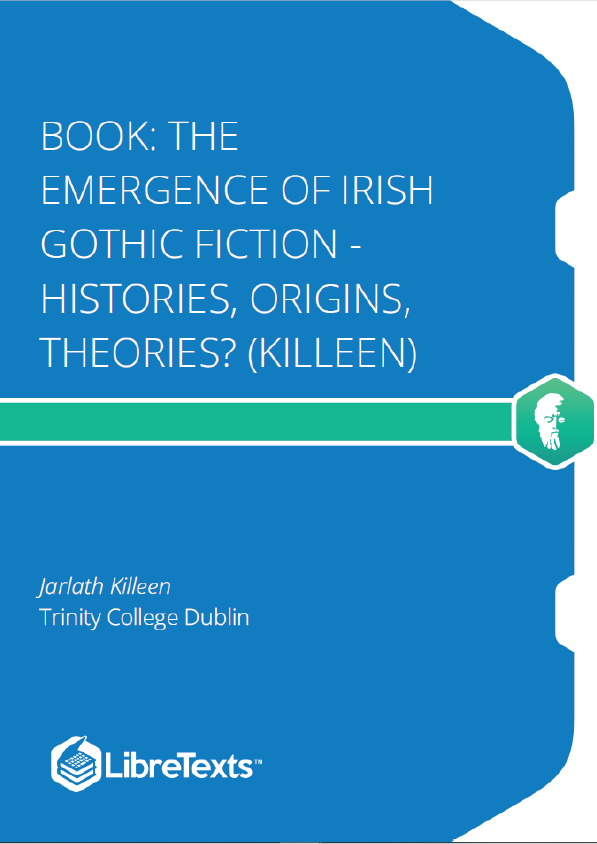Provides a new account of the emergence of Irish gothic fiction in mid-eighteenth century. This book provides a robustly theorised and thoroughly historicised account of the ‘beginnings’ of Irish gothic fiction, maps the theoretical terrain covered by other critics, and puts forward a new history of the emergence of the genre in Ireland. The main argument the book makes is that the Irish gothic should be read in the context of the split in Irish Anglican public opinion that opened in the 1750s, and seen as a fictional instrument of liberal Anglican opinion in a changing political landscape. By providing a fully historicized account of the beginnings of the genre in Ireland, the book also addresses the theoretical controversies that have bedevilled discussion of the Irish gothic in the 1980s, 1990s and 2000s. The book gives ample space to the critical debate, and rigorously defends a reading of the Irish gothic as an Anglican, Patriot tradition. This reading demonstrates the connections between little-known Irish gothic fictions of the mid-eighteenth century (The Adventures of Miss Sophia Berkley and Longsword), and the Irish gothic tradition more generally, and also the gothic as a genre of global significance. Key Features * Examines gothic texts including Mary Shelley’s Frankenstein, Horace Walpole’s The Castle of Otranto, Bram Stoker’s Dracula, Charles Robert Maturin’s Melmoth the Wanderer, (Anon), The Adventures of Miss Sophia Berkley and Thomas Leland’s Longsword * Provides a rigorous and robust theory of the Irish Gothic * Reads early Irish gothic fully into the political context of mid-eighteenth century Ireland This title was made Open Access by libraries from around the world through Knowledge Unlatched.
In 1963, an efficient little shocker called Dementia 13 (or, The Haunted and the Hunted, to go by the title under which it appeared in the United Kingdom) was released, somewhat misleadingly promoted as ‘the most terrifying screen experience of your life’. The film concerns the Halorans, a castellated, fabulously wealthy, Irish landed family whose members appear to be cursed, haunted by the ghost of Kathleen, the youngest daughter, who drowned in a mysterious childhood accident in the family lake. Kathleen may be dead but she is certainly not forgotten and her puzzling demise is commemorated annually by a strange ritual choreographed by the family matriarch, the events of the plot taking place during the seventh such act of remembrance. During the course of the film, it appears as if Kathleen is less-than-faithfully departed and determined to wipe out the rest of the clan from beyond the grave in a series of brutally executed (and well-shot) axe murders. In an unsurprising denouement, the murderer is finally revealed to be rather more flesh and blood than spirit, however, and it is in fact Kathleen’s traumatised brother, Billy, who is set on re-uniting the family in the next world.
While a passable B-movie, only noted by film scholars as the first film directed by the then almost completely unknown Francis Ford Coppola, Dementia 13 is interesting from an Irish studies perspective for a number of reasons. The eerie use Coppola makes of Irish locations, shooting them as inherently frightening spaces in which anything could be (and probably is) lurking, the dysfunctional family dynamics (the Halorans are possibly even more psychopathic than the Corleones, the central figures in Coppola’s Godfather trilogy (1972–90)) and the familiar Gothic trope of the past violently erupting into the present connect this minor horror film to a much longer cultural tradition which figures Ireland as a zone of weirdness, the supernatural and the pathological.



